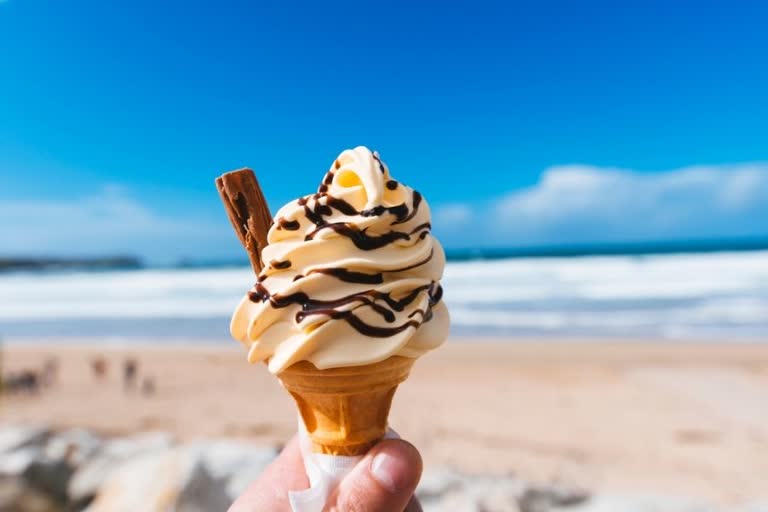Ahh, summer at the beach! The sun on your face, sand between your toes and ice cream in your hand. For scientists young and old, a trip to the beach is also a perfect opportunity to explore the peculiar properties of some fascinating fluids.
Through thick and thin
Take sunscreen. When you first squeeze sunscreen from the bottle, it spreads easily over your skin, providing an even protective layer against the Sun's rays. But once on your skin, sunscreen gains a thicker consistency it has higher viscosity preventing it from dripping off.
Viscosity is the ability of a fluid to keep its shape when a force is applied. Sunscreenis what's called a shear-thinning fluid, which means rubbing it makes its viscosity decrease so it flows more freely.
This effect typically occurs in fluids containing chain-like molecules called polymers. At rest, the polymers are tangled up in an irregular pattern; but when they have pushed around, they rearrange themselves into layers that slide past each other more easily.
Shear-thinning fluids are quite common. Ketchup is a classic example: it has high viscosity at rest, making it stick to the sides of the bottle until you shake it so its viscosity decreases and it flows out the nozzle.
When the ketchup lands on your plate, its viscosity increases again so it forms a satisfying dollop. (If this is starting to make your mouth water, you'll be interested to know that saliva is also a shear-thinning fluid.)
Footprints in the sand
The opposite of a shear-thinning fluid is a shear-thickening fluid, a material whose viscosity increases with applied force.
A familiar example is a very wet sand: if you pick up a handful, it will flow between your fingers like grainy custard. When you squeeze it, however, the sand becomes firm and, counter-intuitively, appears dry.
This behaviour, called the wet-sand effect, occurs because the compressive force of your hand pushes apart tiny grains of sand, creating space that lets water drain away from the surface.
The same effect allows you to run on wet sand, producing firm and dry patches where your feet land. But if you stand still and gently wiggle your toes, the wet sand reverts to a liquid state, allowing your feet to sink in and make a pleasing slurp when you pull them out.
Newton on the beach
Simpler fluids, such as water, have a more or less constant viscosity. These are called Newtonian fluids, after Isaac Newton, who first wrote down the mathematical law to describe them in his famous 1687 book Principia.
To understand viscosity, imagine drinking water through a straw. When you suck, you create lower pressure at the top of the straw than the bottom, drawing water upwards.
The fluid near the walls of the straw experiences friction, so it flows more slowly than fluid near the centre. Newton reasoned the fluid separates into thin layers that slide over each other with a relative speed that depends on the applied force.
